| Home | Introduction
| Approach & Model | Computational
Process | Calculation of Electric Field | Results
& Discussions | References & Appendix
|
FEMLAB Computation:
The electric field was generated using a Finite
Element program capable of taking input geometries of the nanotube, and
calculating the electric field within the given subdomain. For each time step,
new positions of the nanotube were calculated in the main matlab program using
a seperate finite element procedure. These positions were then sent to the
FEMLAB program and the surface energy density as a function of 2-d space were
calculated and returned.
Below is a general description of this
program along with an example of the computation of the energy density for a
single time step. The working code can be seen by clicking here.
1. Table of Contents
- Geometry
- Geom1
- Postprocessing
- Variables
1. Geometry
1.1. Geom1
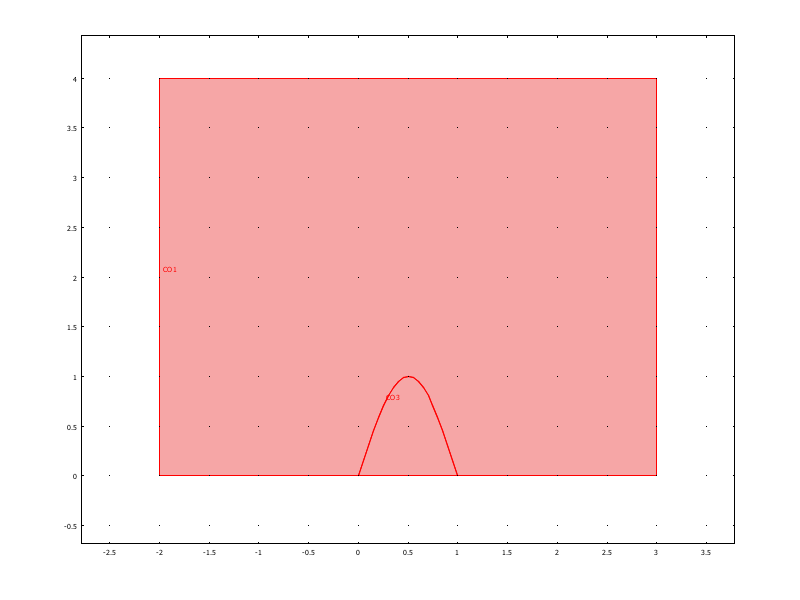
1.1.1.
Point mode
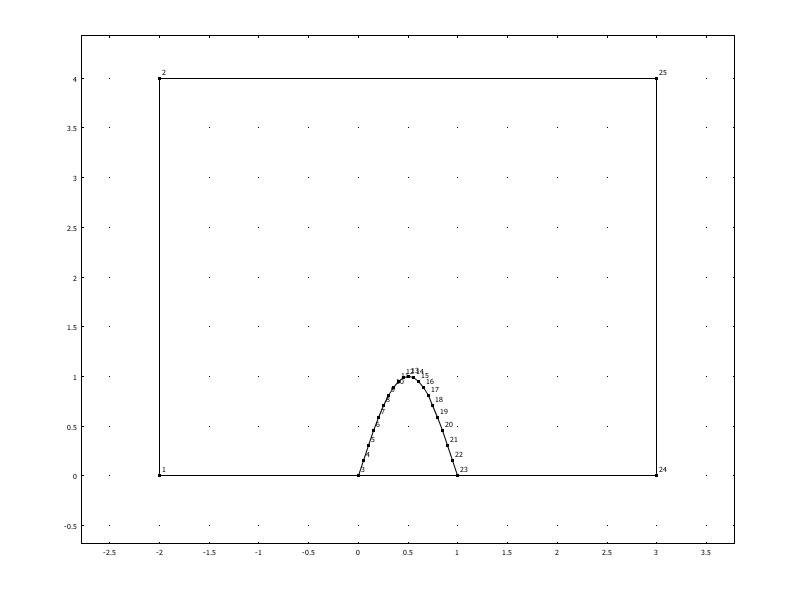
1.1.2.
Boundary mode
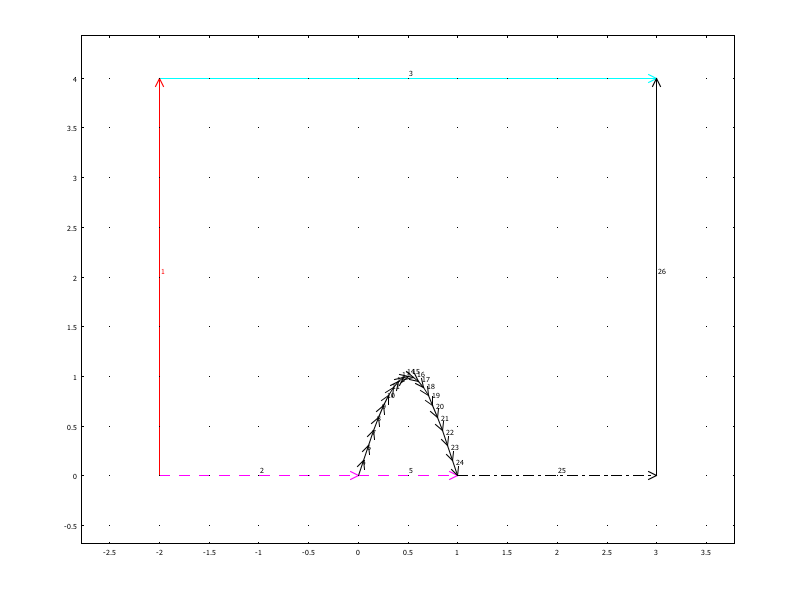
1.1.3.
Subdomain mode
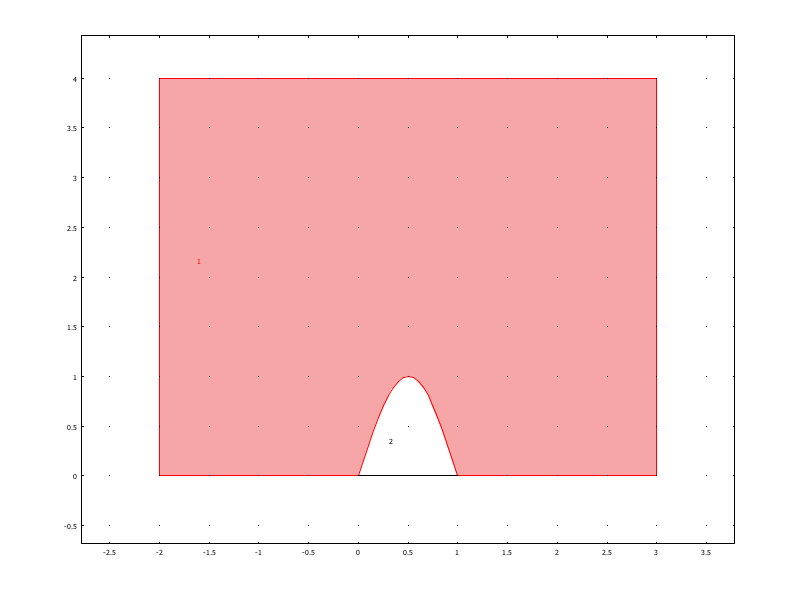
2. Geom1
Space dimensions: 2D
Independent variables: x, y, z
2.1. Mesh
2.1.1. Mesh
Parameters
|
Parameter |
Value |
|
Maximum element size |
0 |
|
Maximum element size
scaling factor |
1 |
|
Element growth rate |
1.3 |
|
Mesh curvature factor |
0.3 |
|
Mesh curvature cut off |
0.001 |
|
Resolution of narrow
regions |
1 |
|
Resolution of geometry |
10 |
|
x-direction scale factor |
1.0 |
|
y-direction scale factor |
1.0 |
|
Mesh geometry to level |
Subdomain |
|
Optimize quality |
On |
|
Subdomain |
1-2 |
|
Maximum element size |
|
|
Element growth rate |
|
|
Boundary |
1-26 |
|
Maximum element size |
|
|
Element growth rate |
|
|
Mesh curvature factor |
|
|
Mesh curvature cut off |
|
|
Point |
1-25 |
|
Maximum element size |
|
|
Element growth rate |
|
2.1.2. Mesh
Statistics
|
Number of degrees of
freedom |
2175 |
|
Number of boundary
elements |
78 |
|
Number of elements |
1058 |
|
Minimum element quality |
0.7276 |
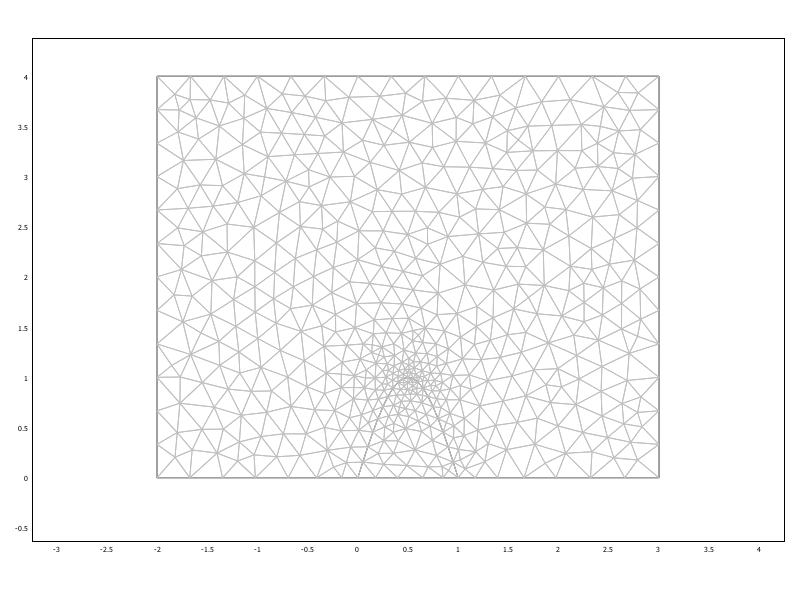
2.2. Application
Mode: Electrostatics (emes)
Application mode type: Electrostatics
(Electromagnetics Module)
Application mode name: emes
2.2.1.
Scalar Variables
|
Name |
Variable |
Value |
Description |
|
epsilon0 |
epsilon0_emes |
8.854187817e-12 |
Permittivity of vacuum |
2.2.2.
Application Mode Properties
|
Property |
Value |
|
Default element type |
Lagrange - Quadratic |
|
Input property |
Forced voltage |
|
Frame |
Frame (ref) |
|
Weak constraints |
Off |
2.2.3.
Variables
Dependent variables: V
Shape functions: shlag(2,'V')
Interior boundaries not active
2.2.4.
Boundary Settings
|
Boundary |
|
1, 26 |
3 |
|
Type |
|
Ground |
Electric potential |
|
Electric potential (V0) |
V |
0 |
500 |
|
Integration order
(wcgporder) |
1 |
{} |
{} |
|
Boundary |
2, 5 |
25 |
|
Type |
Electric potential |
Electric potential |
|
Electric potential (V0) |
-500.0 |
-500 |
|
Integration order
(wcgporder) |
{} |
{} |
2.2.5.
Subdomain Settings
|
Subdomain |
|
1 |
2 |
|
Shape functions (shape) |
|
shlag(2,'V') |
shlag(2,'V') |
|
Relative permittivity
(epsilonr) |
1 |
1 |
10 |
3. Postprocessing
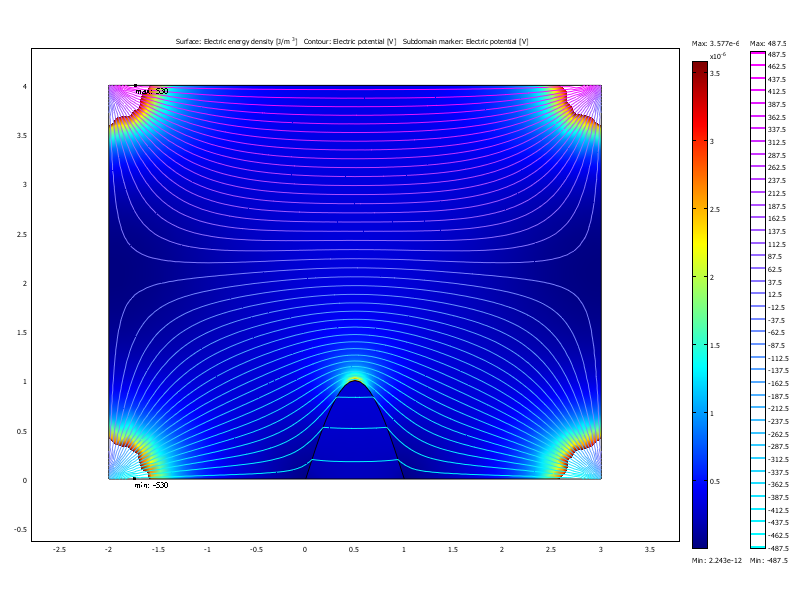
4. Variables
4.1. Boundary
|
Name |
Description |
Expression |
|
unTx_emes |
Maxwell surface stress
tensor, x component |
-0.5 * (Ex_emes_up *
Dx_emes_up+Ey_emes_up * Dy_emes_up) * dnx+(dnx * Dx_emes_up+dny * Dy_emes_up)
* Ex_emes_up |
|
dnTx_emes |
Maxwell surface stress
tensor, x component |
-0.5 * (Ex_emes_down * Dx_emes_down+Ey_emes_down
* Dy_emes_down) * unx+(unx * Dx_emes_down+uny * Dy_emes_down) * Ex_emes_down |
|
unTy_emes |
Maxwell surface stress
tensor, y component |
-0.5 * (Ex_emes_up *
Dx_emes_up+Ey_emes_up * Dy_emes_up) * dny+(dnx * Dx_emes_up+dny * Dy_emes_up)
* Ey_emes_up |
|
dnTy_emes |
Maxwell surface stress
tensor, y component |
-0.5 * (Ex_emes_down *
Dx_emes_down+Ey_emes_down * Dy_emes_down) * uny+(unx * Dx_emes_down+uny *
Dy_emes_down) * Ey_emes_down |
|
nD_emes |
Surface charge density |
unx * (Dx_emes_down-Dx_emes_up)+uny
* (Dy_emes_down-Dy_emes_up) |
4.2. Subdomain
|
Name |
Description |
Expression |
|
Dx_emes |
Electric displacement, x
component |
epsilonxx_emes *
Ex_emes+epsilonxy_emes * Ey_emes |
|
Dy_emes |
Electric displacement, y
component |
epsilonyx_emes *
Ex_emes+epsilonyy_emes * Ey_emes |
|
epsilon_emes |
Permittivity |
epsilon0_emes *
epsilonr_emes |
|
epsilonxx_emes |
Permittivity, xx
component |
epsilon0_emes *
epsilonrxx_emes |
|
epsilonxy_emes |
Permittivity, xy
component |
epsilon0_emes *
epsilonrxy_emes |
|
epsilonyx_emes |
Permittivity, yx
component |
epsilon0_emes *
epsilonryx_emes |
|
epsilonyy_emes |
Permittivity, yy
component |
epsilon0_emes *
epsilonryy_emes |
|
Ex_emes |
Electric field, x
component |
-Vx |
|
Ey_emes |
Electric field, y
component |
-Vy |
|
We_emes |
Electric energy density |
0.5 * (Dx_emes *
Ex_emes+Dy_emes * Ey_emes) |
|
normE_emes |
Electric field, norm |
sqrt(abs(Ex_emes)^2+abs(Ey_emes)^2) |
|
normD_emes |
Electric displacement,
norm |
sqrt(abs(Dx_emes)^2+abs(Dy_emes)^2) |
|
normP_emes |
Electric polarization,
norm |
sqrt(abs(Px_emes)^2+abs(Py_emes)^2) |
|
normDr_emes |
Remanent displacement,
norm |
sqrt(abs(Drx_emes)^2+abs(Dry_emes)^2) |